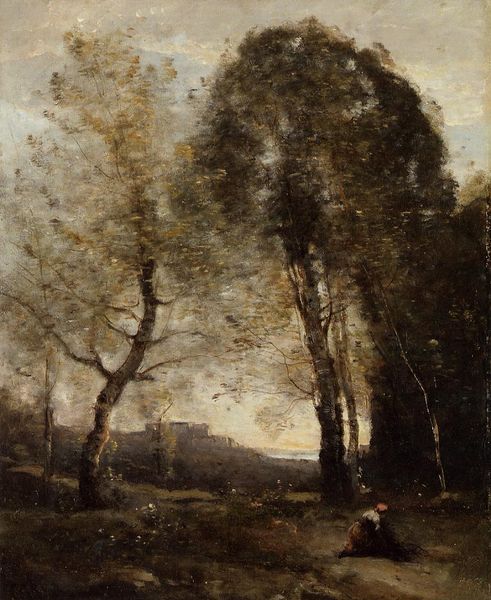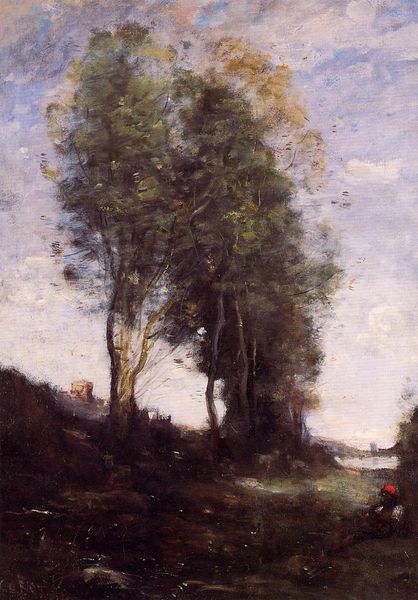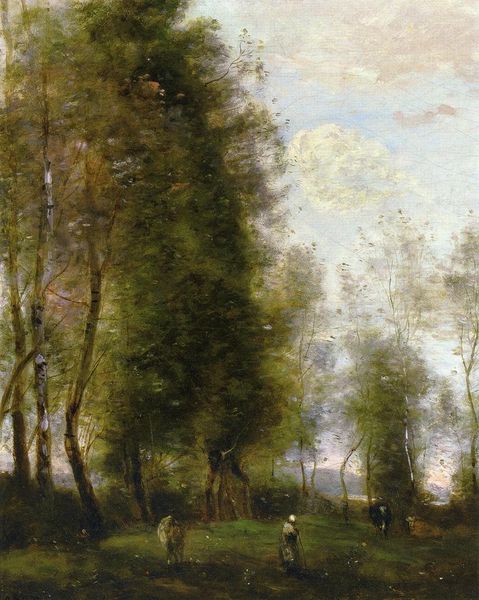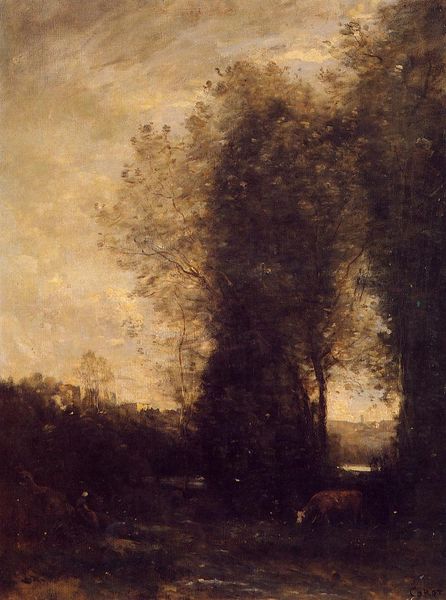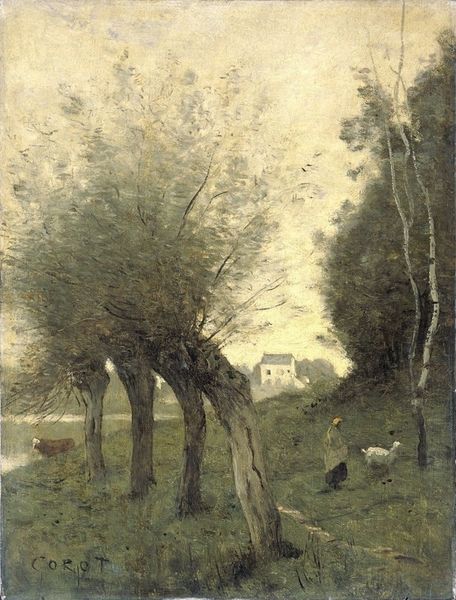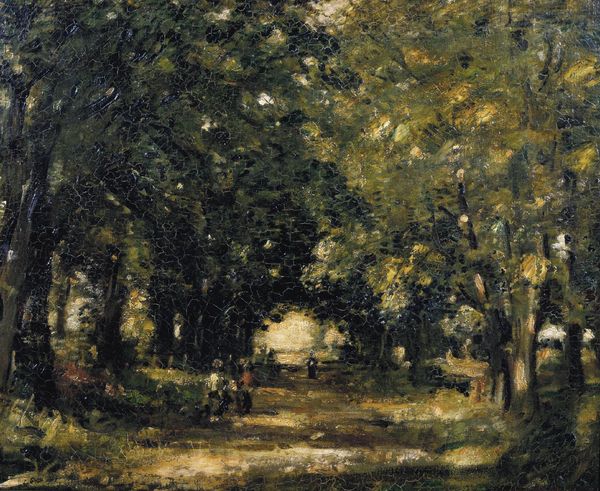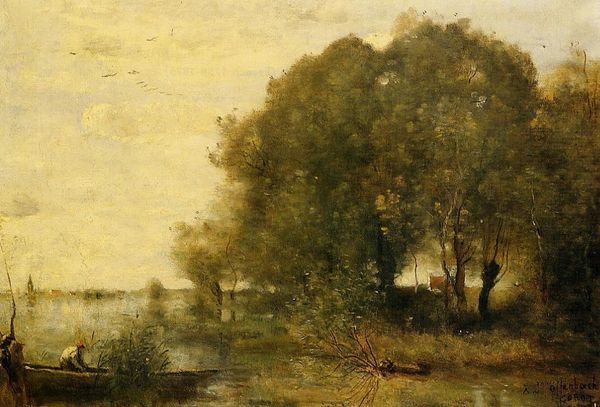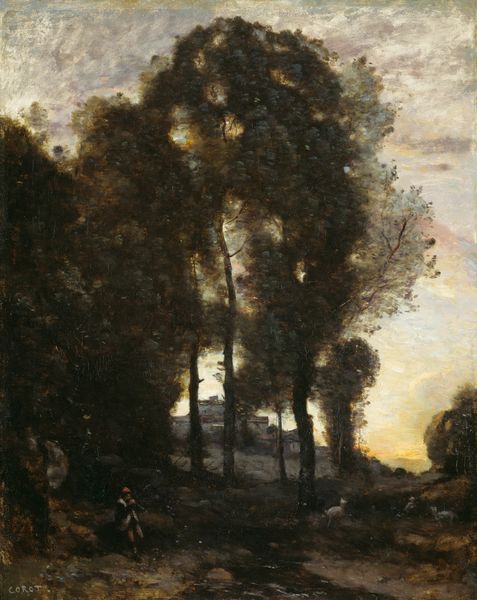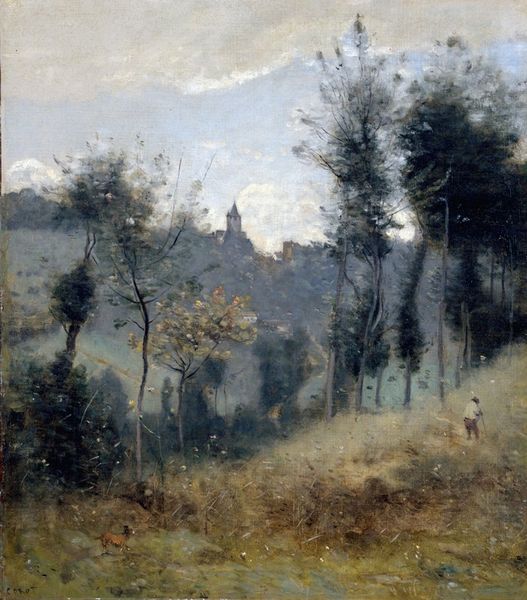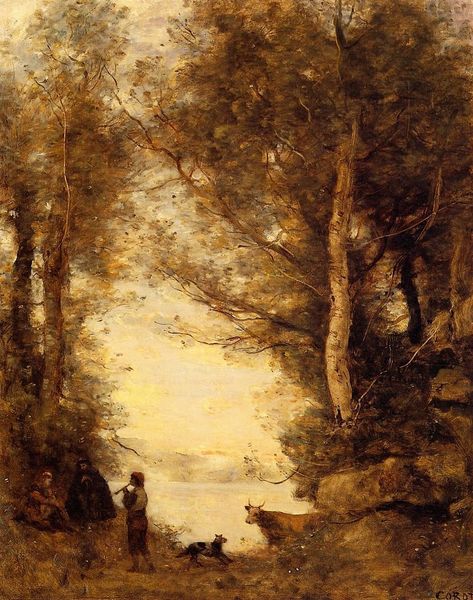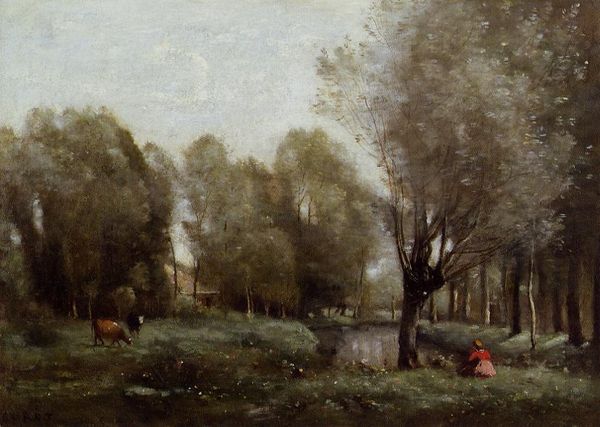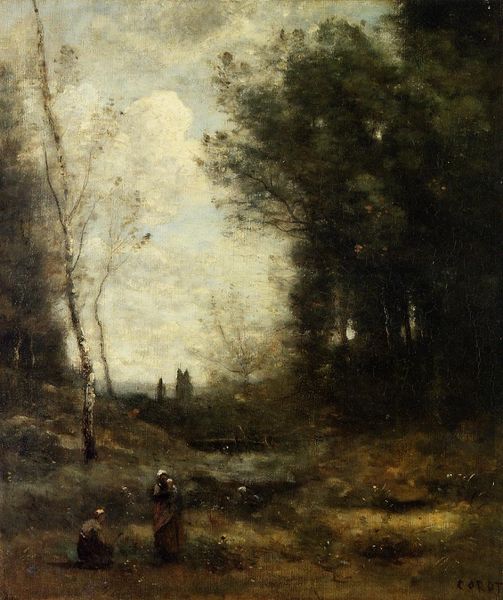
Copyright: Public domain
Editor: This is "Cowherd in a Dell, Souvenir of Brittany" painted by Camille Corot in 1873, using oil paint. The scene has a softness, like a memory, but the cows are really grounding the whole image. What do you see in this piece? Curator: I’m drawn to the very *stuff* of this painting. Corot's "Souvenir of Brittany" is more than just a pretty landscape; it's a document of 19th-century artistic labor and the commercialization of the rural idyll. Editor: Can you tell me more about that? I see the trees, the figure… Curator: Note how Corot’s rapid brushstrokes capture light. This wasn’t just about aesthetics; it was a calculated engagement with new markets. Paintings like these were almost mass-produced souvenirs for an increasingly mobile middle class eager to consume idealized visions of peasant life, distanced from the realities of industrial labor. Editor: So, like a postcard? Curator: Exactly, and it was crafted and consumed as such. It catered to bourgeois desires for a nostalgic and constructed experience of rural Brittany, while simultaneously obscuring any genuine insight into its working class conditions of production. Think about it - oil paints, canvases... mass-produced. It's a manufactured vision. Editor: Wow, I hadn't thought of it that way! It's a whole commodity chain. Curator: Indeed, a chain linking artist, producer, distributor, and consumer through a product designed to elicit a certain feeling, a carefully packaged "souvenir". So much more complex than just ‘a landscape’. Editor: Definitely gives you something to think about in terms of materials and economy. I'll never look at a landscape the same way. Curator: That is good, seeing beyond the surface.
Comments
No comments
Be the first to comment and join the conversation on the ultimate creative platform.
